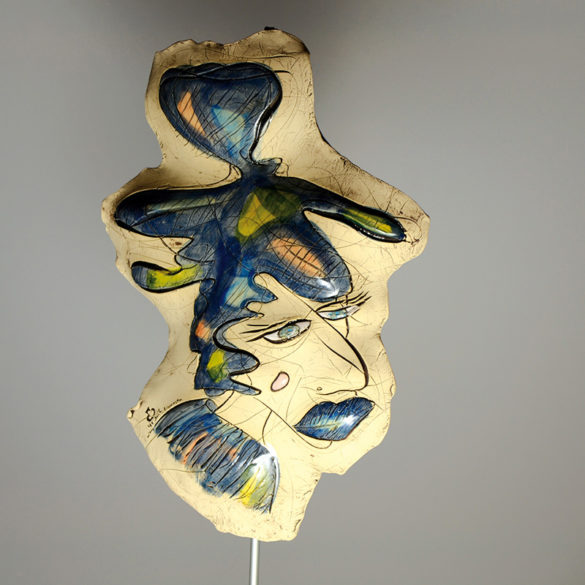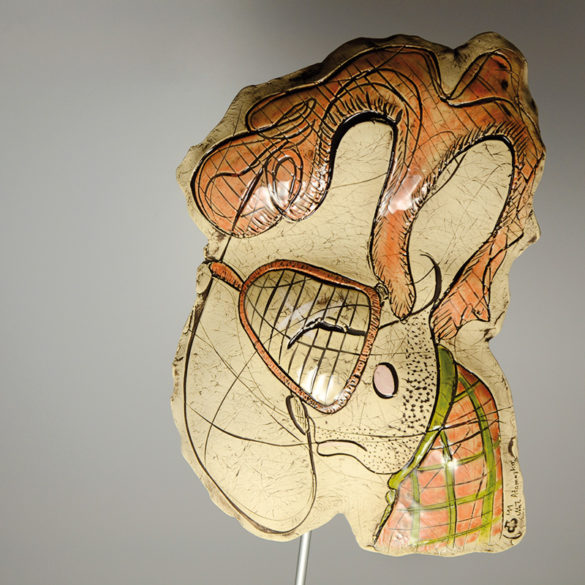Coincidencia o sincronicidad. Cuando Amy Winehouse murió, yo tenía programado realizar su cara esa misma semana. Yo estaba haciendo las 100 Caras Urbanas para una exhibición de grupo en la que participaría ese mismo año.

Mientras trabajaba su rostro en la arcilla, no podía dejar de pensar con tristeza en una vida tan llena de talento. La belleza de la naturaleza humana viene también dotada de una terrible tendencia hacia la auto-destrucción. En un punto dije «oh Amy!» y es así como surgió su nombre.
Luego ese mismo año, justo antes de la inauguración de la exposición, fue ella la primera de las caras de esta serie que se vendió. Tres minutos después, mientras iba a colocar el punto rojo en la obra vendida, otro coleccionista manifestó su deseo de comprarla.
Me sentí muy emocionada y agradecida, pero a la vez sorprendida, y debo admitir que me desilusionó un poco. ¿Por qué Amy? No la consideraba como la cara que mas conmueve. ¿Y las caras de gente normal? Pero bueno, todo esto se me olvidó en cuanto otras caras encontraron un nuevo hogar. La exhibición fue todo un éxito.
Es que la gente y sus expresiones me conmueven profundamente. La belleza de la gente en su día a día es poesía para mi.
Pero no se trata ni trató nunca de mi.
Como artista y ser humano, estás confrontado siempre con lo que tienes en tu mente y aquello que es percibido por otros.
Para mi esto es interesante y abre-ojos.
Tal parece que todos nos sentimos atraídos por el polvo estelar
 Y hablando de polvo de estrellas… Woody Allen está aún disponible
Y hablando de polvo de estrellas… Woody Allen está aún disponible
Más información acerca de las coincidencias y las esculturas de pared de la serie 100 Caras Urbanas.
+ (Nota: Las 100 Caras Urbanas están disponibles. Para obtener detalles, por favor toma contacto conmigo a través de art@atamayka.com) +




